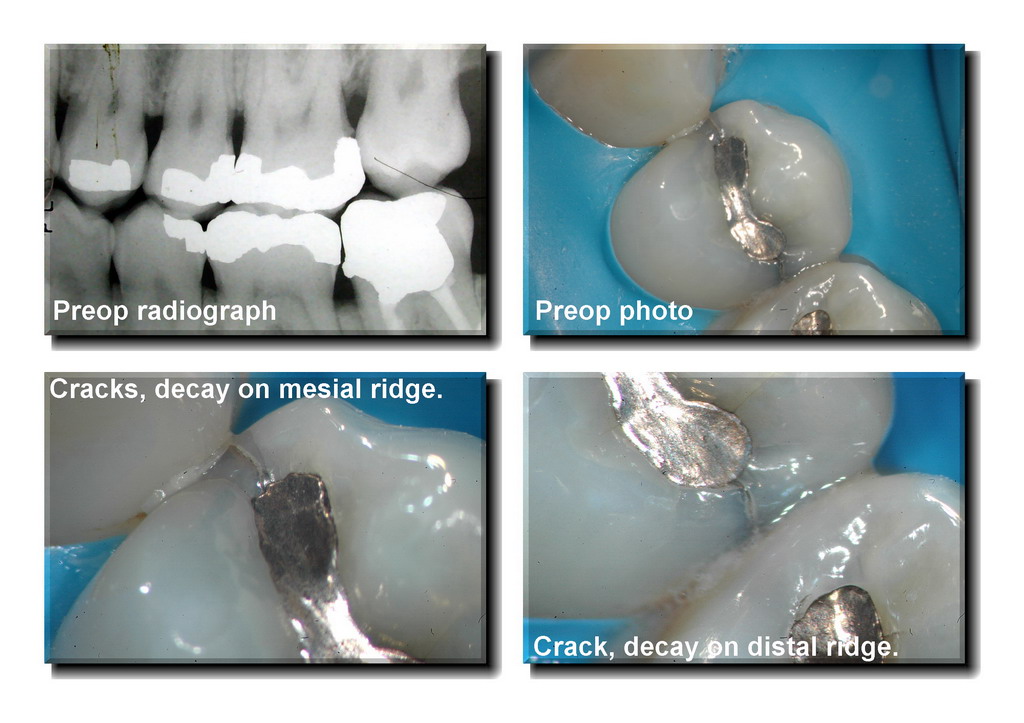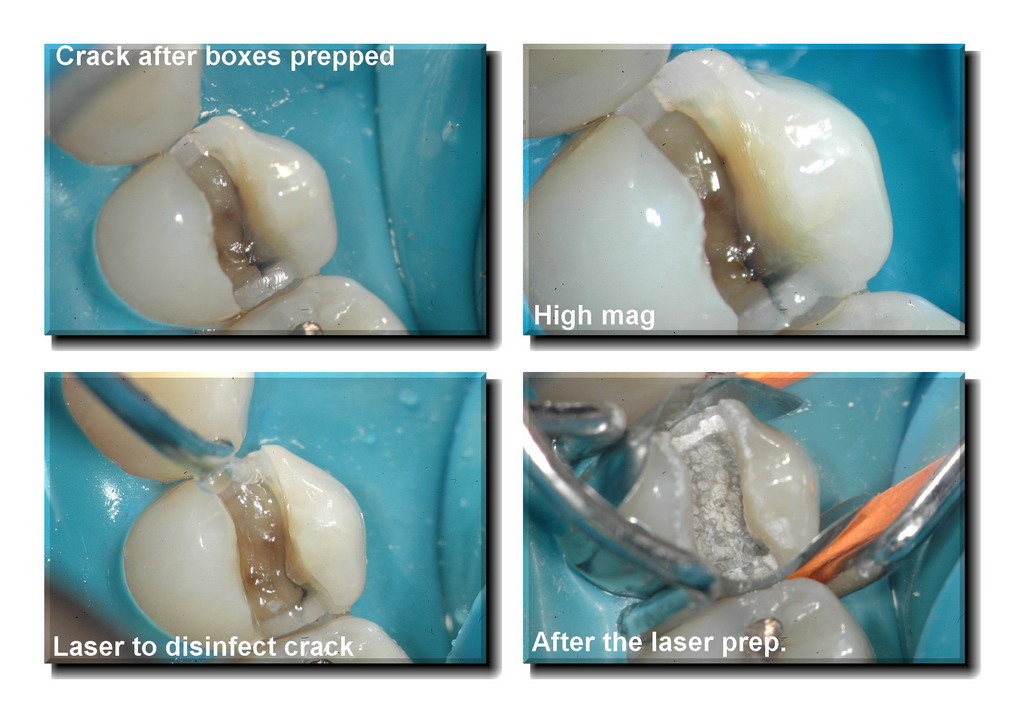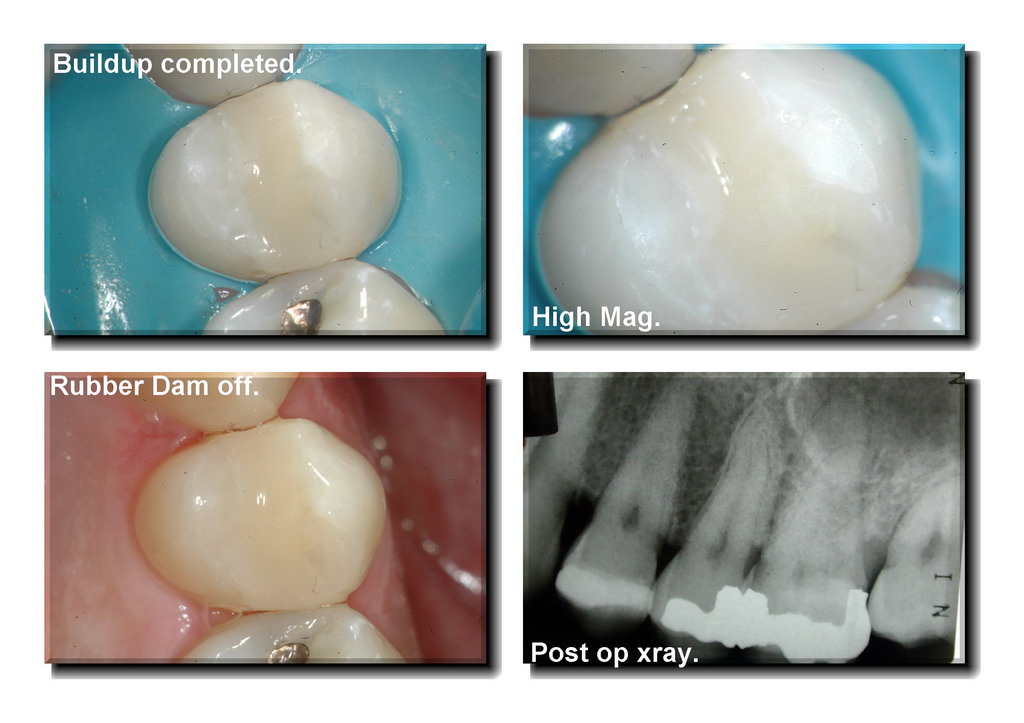Forums › Erbium Lasers › General Erbium Discussion › Disinfection of dentin during restoration
- This topic is empty.
-
AuthorPosts
-
Graeme MilicichSpectatorBob
I don’t own an Nd:YAG, so I haven’t given it a try.
Glenn van AsSpectatorI posted this on DT, but thought that it was applicable for the thread here, its my way of chasing the cracks, and I do hear what Graeme is saying but prefer at this point to go with full coverage restorations for these after minimal chasing of the crack to retain as much tooth structure as possible.
Please bear in mind that Graeme has forgotten more on minimally invasive dentistry than I will ever learn but that I havent had the problems yet with these, treating them conservatively with the laser and then putting crowns on after to hold the cusps together.
This one was asymptomatic.
Glenn
HI folks: I think that there is alot to be learned and discussed from this case I did last week so here goes…….
This patient came in a little while ago and although I couldnt see anything on the BW radiograph, I didnt like the look of the occlusal amalgam on the first premolar (maxilla- left side, number 24 in Canada , #12 in US).
What didnt I like, well the shadows on the marginal ridges but more importantly the cracks on the mesial (2 of them) and the one crack on the distal. Now I can tell you that almost always when I see this there is trouble under the amalgam and the restoration better be removed because these are the precursors to vertically fractured teeth (Mesial to Distal cracks).
I hate shadows on marginal ridges and when there are cracks visible at high mag they are a deadly combination.
THe patient said to me……” I dont want to do anything, it doesnt bother me to cold or chewing”
I told him that if there was nothing underneath the old amalgam that I would do it for free (hes a good friend) and bet him that there would be ( bet was a cold one next time we get together).
He agreed to see what was under there.
WOW …….what a crack huh, and it was asymptomatic. Now Rockin Rod Kurthy has a great picture of a vertically fractured tooth that he shows to his patients who have cracked teeth showing what end stage vertical fractures (requiring exo) look like. Its amazing how with high mag and illumination I see these all the time and now we are starting to treat them pre-emptively before they cause symptoms.
I hate chasing the cracks despite very knowledgeable people like Graeme Milicich who say that you must remove the whole crack, I prefer to remove a little with the erbium laser (400 micron tip cutting 1-2mm into the stained groove to remove the stain) and then fill the area with flowable and do a core buildup, afterwards removing the occlusal forces.
Now remember, this tooth was asymptomatic to begin with so there are no pulpal symptoms, the tooth test vital and as you can see from the post op rad, the restoration is a LONG ways away from the pulp.
He is scheduled for the crown to try and hold it together.
I hope it stimulates some conversation but my main points were.
1. Cracks on marginal ridges Mesial and Distal with gray shadows are not a good thing.
2. With high mag and illumination you can attack these cracks prior to them becoming symptomatic and in my opinion save the patient from endo or catastrophic vertical fractures.
3. The laser if you have one can help reduce bacterial count (one of the reasons for sensitivity) without removing alot of tooth structure.
4. Crowns on these are ideal and the scopes documentation helps get this approved.Finally I know he needs other work in his mouth……..we are getting there slowly but surely.
Cya
Glenn





-
AuthorPosts
